Fundamental Capacitor Functions in the World of Electronics

When considering Capacitor selection for a given circuit, whether you’re focused on power electronics or deep in the world of RF, it's important to remember that some of a capacitor’s fundamental roles are universal.
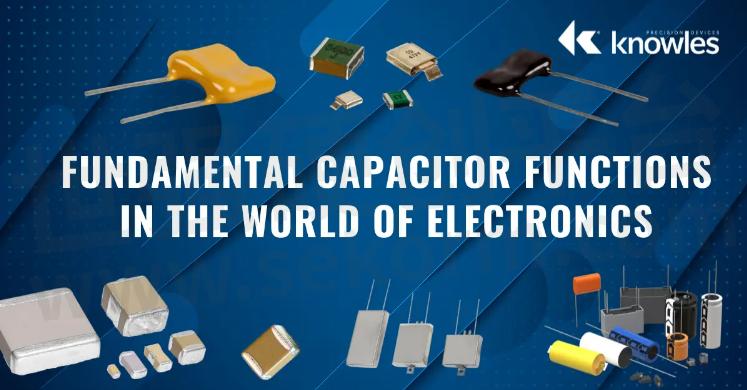
Basic Charge Storage and Discharge
When connected to a direct current (DC) voltage source, capacitors charge almost instantaneously, but they can discharge just as fast if shorted; however, with some resistance in place, the rate of charge and discharge is exponential rather than direct (Figure 1).
The charging formula is expressed as:

The discharging formula is expressed as:

Oscillators, waveform shapers and low-discharge power backup circuits are examples of electronics that leverage controlled charge and discharge rates.
Figure 1: Charging capacitor schematic and plotted behavior (top) compared to discharging capacitor schematic and plotted behavior (bottom).
Bypassing and Low-Pass Filtering
When placed in parallel with a signal path, capacitors take on a bypassing function. They allow DC to continue along the wire, but they divert high-frequency signal components to ground. In other words, capacitors play a role in low-pass filters, offering a low-impedance path for high-frequency signals to ground. In an RC low-pass filter (Figure 2), impedance decreases as frequency increases, so the ratio of VI to VO depends on the value of R, C and the signal frequency. When signals are low frequency and high impedance, energy goes to the output. When signals are high frequency and low impedance, energy is sent to ground.
Frequency cutoff for an RC low-pass filter is expressed as:
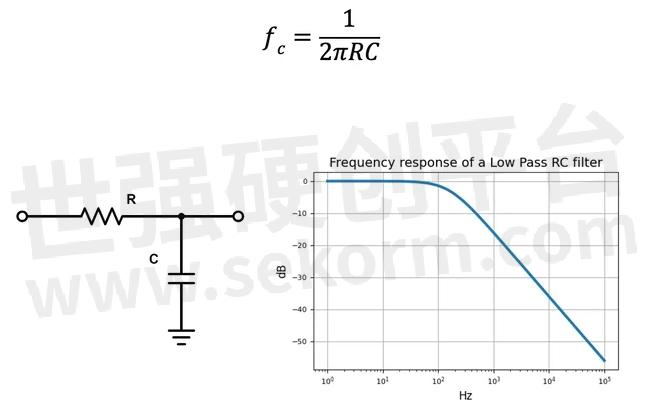
Figure 2: An example of an RC low-pass filter (left) and its frequency response (right).
Coupling and High-Pass Filtering
When placed in series with the signal path, rather than in parallel, capacitors take on a different bypassing role. In this arrangement, they block DC while allowing AC signals to pass through the circuit. This function is called DC blocking or AC coupling.
The frequency cutoff for an RC high-pass filter is the same as for a RC low-pass filter:

In Figure 3, low-frequency signals see an impedance that is higher than R, so they go to ground. High-frequency signals see an impedance lower than R, resulting in a high-frequency output.
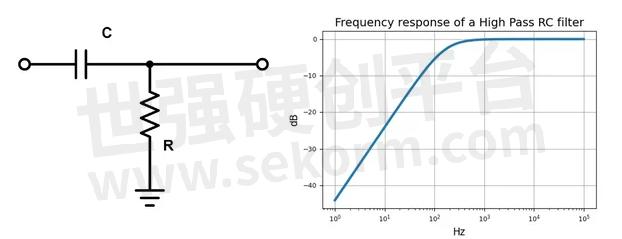
Figure 3: An example of an RC high-pass filter (left) and its frequency response (right).
Smoothing Circuit
As mentioned, controlled capacitor charging and discharging serves multiple uses in electronics. For example, a full wave rectifier can use a capacitor to smooth rectified DC pulses and produce a more consistent DC output with less ripple (Figure 4).
The blue DC pulse is the result of a 60Hz AC signal at 10V root-mean-square (rms) passing through a rectifier. The smoothing capacitor charges at the top of each pulse and discharges until the next pulse rises, when it recharges the capacitor. The output across the load is noted in green on the plot.
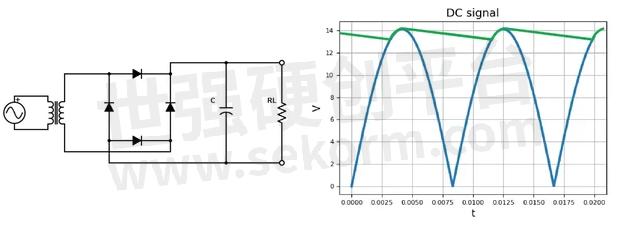
Figure 4: Full wave rectifier with a ripple filter (left) and ripple output plot (right).
Timing and Waveform Shaping
A discussion of timing and waveform shaping is best with context. Here, we’ll use an RC relaxation oscillator (Figure 5). In these circuits, the voltage across the capacitor relaxes toward a time-varying target voltage.
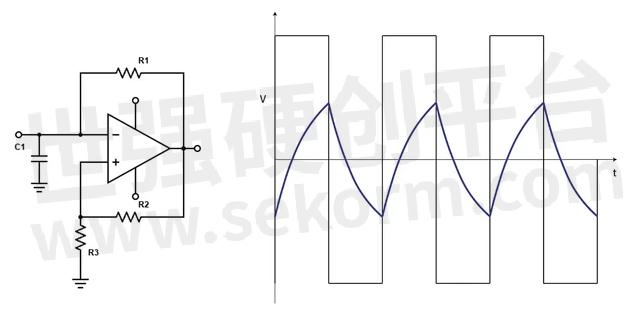
Figure 5. An example of an RC relaxation oscillator (left) and its square wave output (right).
The capacitor is charged through a resistor and discharged when it reaches a certain threshold value, and this cycle repeats continuously. An amplifier, wired with positive feedback, controls the charging and discharging of the capacitor by acting like a switch triggered by the voltage threshold. The amplifier is also responsible for providing gain to the oscillator to maintain the oscillation. Figure 5 shows the switching behavior of the square wave output. Charging and discharging is represented by the blue waveform.
- +1 Like
- Add to Favorites
Recommend
This document is provided by Sekorm Platform for VIP exclusive service. The copyright is owned by Sekorm. Without authorization, any medias, websites or individual are not allowed to reprint. When authorizing the reprint, the link of www.sekorm.com must be indicated.






















































































































































































































































































































































































































































































































































































































































































































































































































































































































